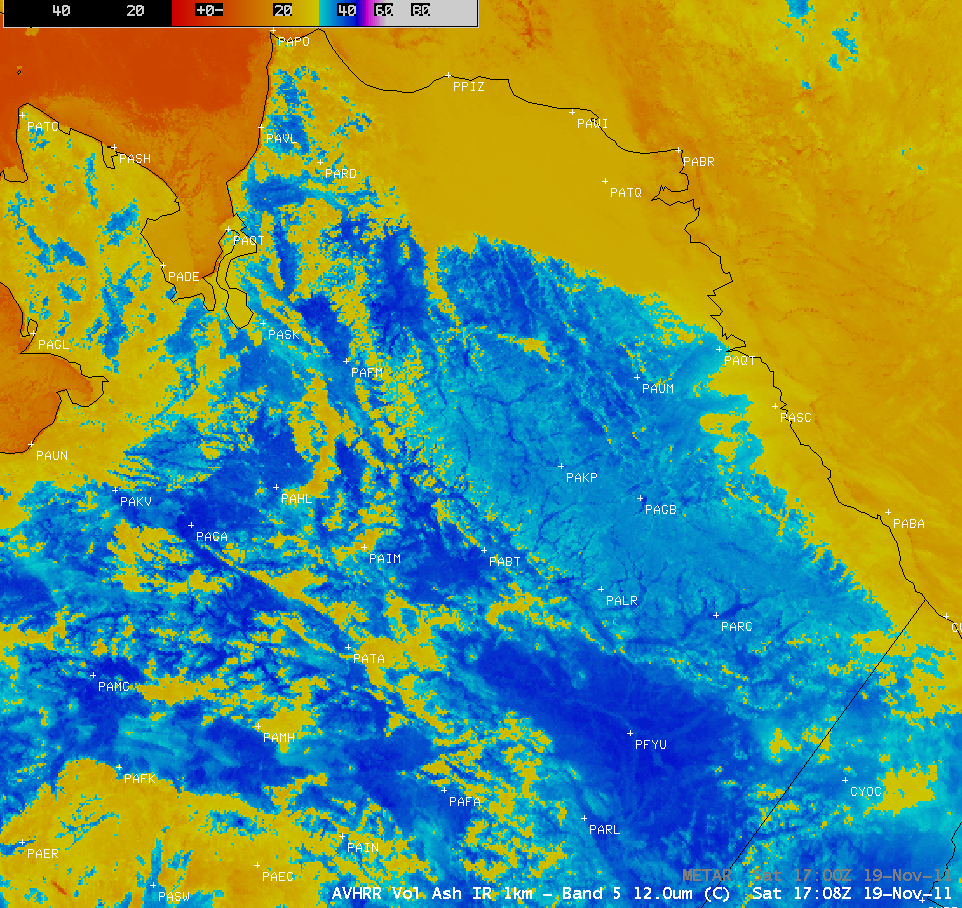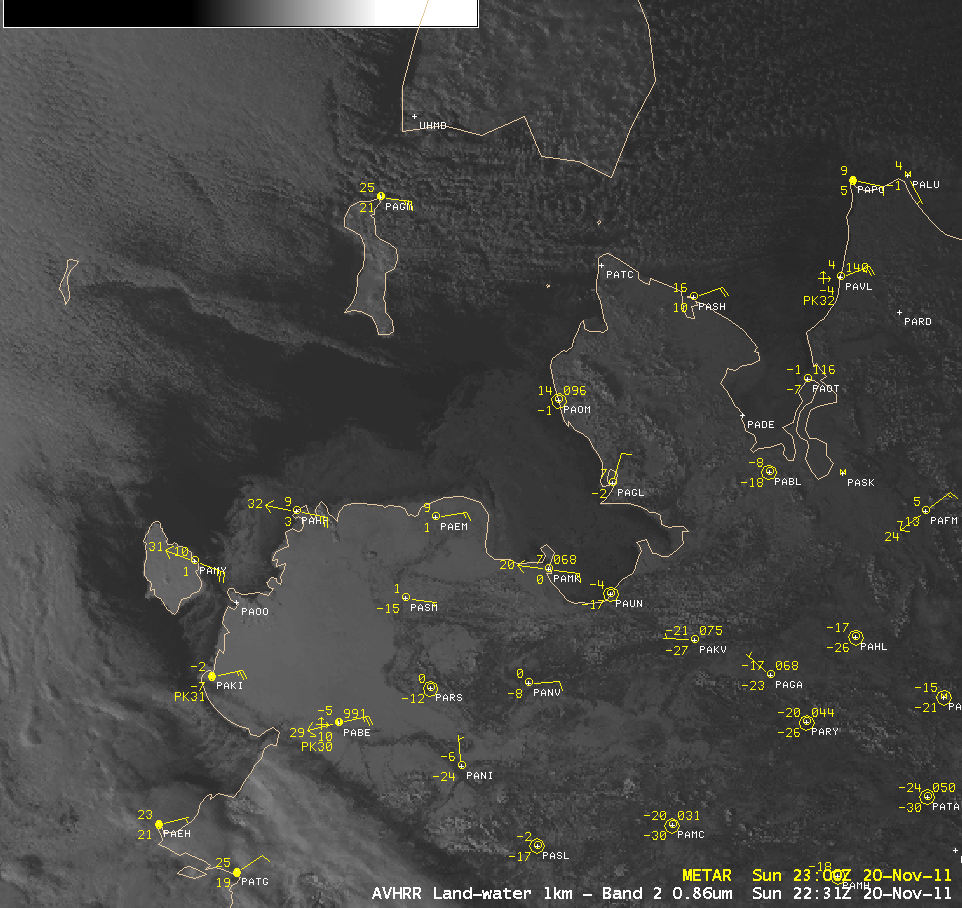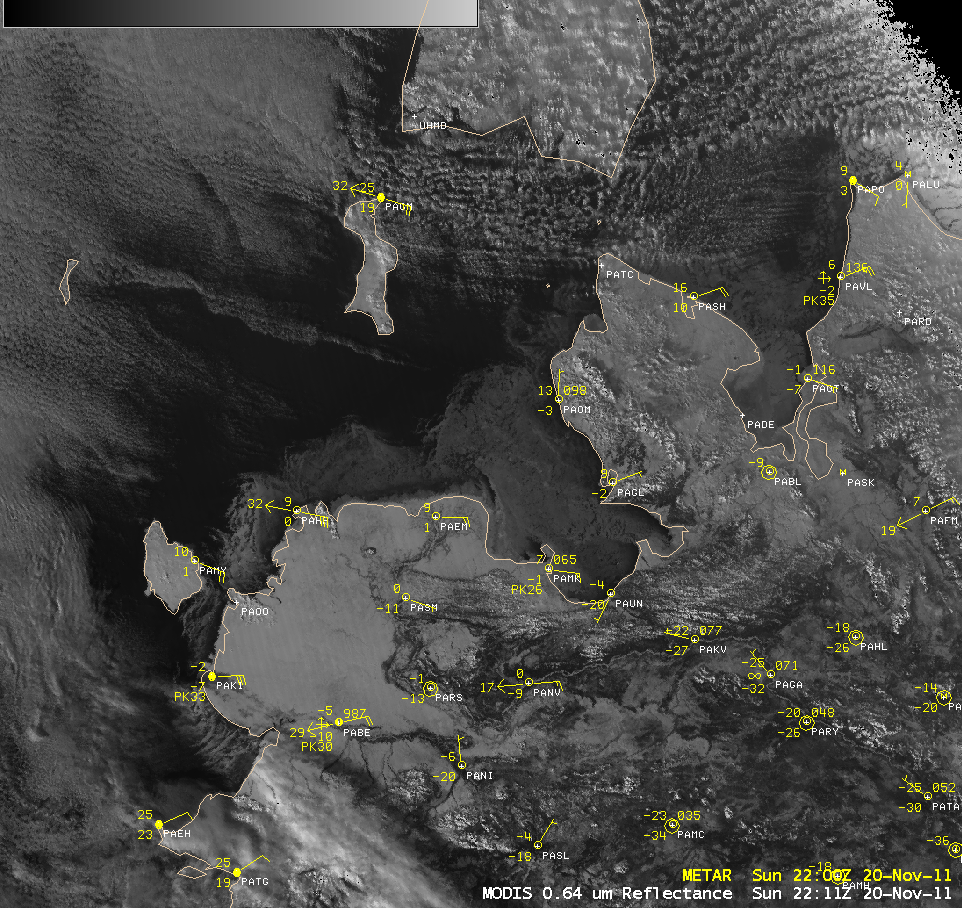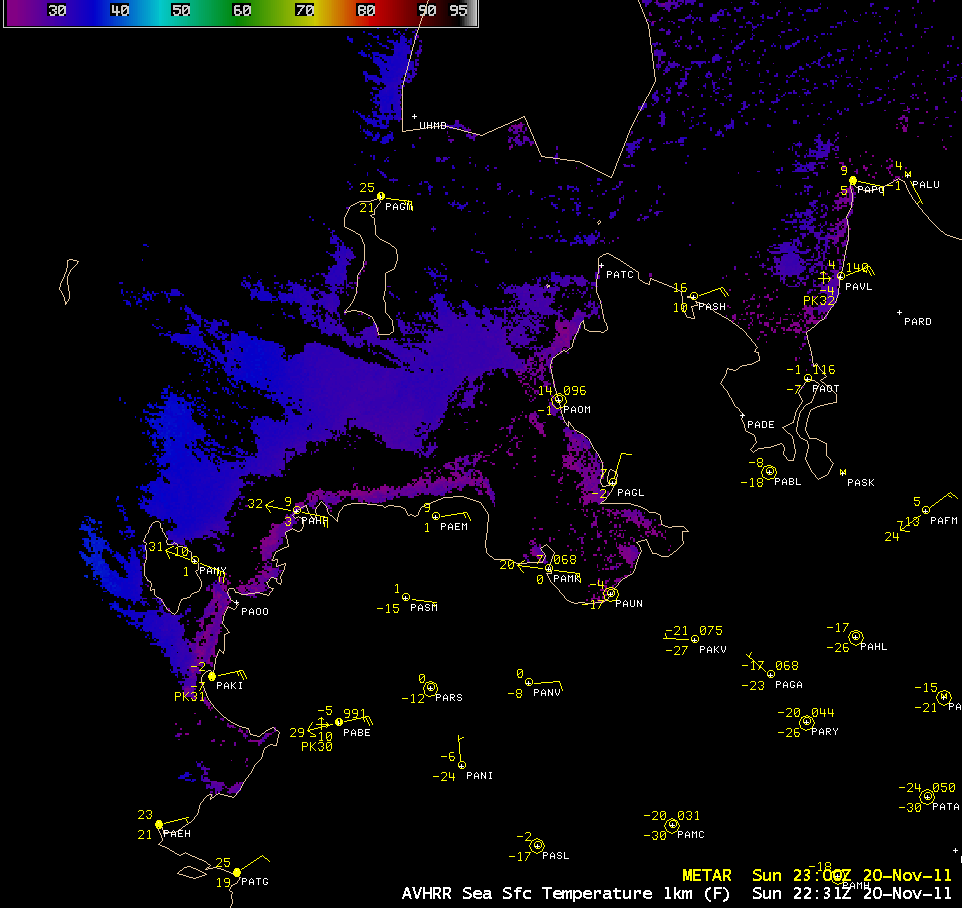Record-setting early winter season cold in Alaska
Much of interior Alaska experienced record-setting early winter season cold temperatures during the middle of November 2011:
PUBLIC INFORMATION STATEMENT
NATIONAL WEATHER SERVICE FAIRBANKS AK
304 AM AKST SAT NOV 19 2011…THE RECORDS CONTINUE TO FALL AT FAIRBANKS…
THE EARLY WINTER NOVEMBER COLD SNAP CONTINUES TO RE-WRITE THE RECORD BOOKS AT FAIRBANKS. THE CURRENT COLD SNAP WILL GO DOWN IN THE RECORD BOOKS AS ONE OF THE MOST SEVERE EARLY SEASON COLD SNAPS AT FAIRBANKS.
THE HIGH TEMPERATURE YESTERDAY AT THE FAIRBANKS INTERNATIONAL AIRPORT WAS 21 BELOW. THIS BREAKS THE PREVIOUS RECORD LOW MAXIMUM TEMPERATURE OF 19 BELOW WHICH WAS ESTABLISHED IN 1969. THE LOW TEMPERATURE YESTERDAY OF 36 BELOW BREAKS THE PREVIOUS RECORD LOW FOR THE DATE OF 33 BELOW ALSO SET IN 1969.
AT 213 AM THIS MORNING…THE TEMPERATURE AT THE AIRPORT DROPPED TO 36 BELOW. THIS BREAKS THE OLD RECORD LOW FOR NOVEMBER 19TH OF 33 BELOW IN 1969.
TODAY (SATURDAY) MARKS THE 5TH CONSECUTIVE DAY WITH A LOW TEMPERATURE OF 30 BELOW OR COLDER AT THE AIRPORT. THIS TIES WITH 1956…1969 AND 1989 FOR THE MOST CONSECUTIVE DAYS WITH A
TEMPERATURE OF 30 BELOW OR COLDER SO EARLY IN THE WINTER SEASON.THE LOW TEMPERATURE HAS NOW BEEN 35 BELOW OR COLDER EACH OF THE LAST 5 DAYS. THIS HAS NEVER HAPPENED BEFORE SO EARLY IN THE WINTER SEASON AT FAIRBANKS. THE OLD RECORD WAS ONLY 2 DAYS…AND WAS LAST RECORDED IN 1989.
THE HIGH TEMPERATURE HAS NOW BEEN 20 BELOW OR COLDER EACH OF THE LAST 3 DAYS. THIS TIES WITH 1989 FOR THE MOST CONSECUTIVE DAYS WITH A HIGH TEMPERATURE OF 20 BELOW OR COLDER SO EARLY IN THE WINTER SEASON.
The coldest surface air temperature reported during the period was -54º F (-48º C) at Manley Hot Springs on 17 November. AWIPS images of MODIS 11.0 µm IR data (above) and POES AVHRR 12.0 µm IR data (below) showed thermal signatures of some the coldest air draining into river valleys and other low-lying areas (darker blue color enhancement).
20 November marked the sixth consecutive day with a daily minimum temperature at Fairbanks International Airport of -35º F (-37º C) or colder — such a long cold streak had never been recorded before so early in the season. While western Alaska was not as cold as the interior, the air was cold enough to promote the rapid formation of sea ice off the west coast. A sequence of three 1-km resolution POES AVHRR 0.86 µm visible channel images (above) showed the extent of the sea ice on 20 November.
A comparison of 1-km resolution MODIS 0.64 µm visible channel and 11.0 µm IR channel images (below) showed that the sea ice exhibited much colder IR brightness temperatures (-10º to -15º C, orange color enhancement) than the adjacent ice-free waters.
An AWIPS image of the 1-km resolution POES AVHRR Sea Surface Temperature (SST) product (below) indicated that the waters just beyond the ice edge had SST values in the upper 20s to low 30s F, which would be conducive to a further expansion of the ice field away from the coast.






